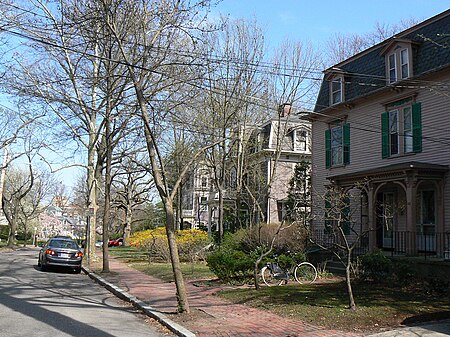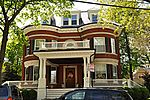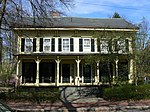Avon Hill Historic District
Historic districts in Middlesex County, MassachusettsHistoric districts on the National Register of Historic Places in MassachusettsNRHP infobox with nocatNational Register of Historic Places in Cambridge, MassachusettsNeighborhoods in Cambridge, Massachusetts

The Avon Hill Historic District is a residential historic district near Porter Square in Cambridge, Massachusetts. Set atop Avon Hill southwest of Porter Square, this subdivision, laid out about 1870, contains a concentration of the finest Victorian and Second Empire residential buildings in the city. The district was listed on the National Register of Historic Places in 1983.
Excerpt from the Wikipedia article Avon Hill Historic District (License: CC BY-SA 3.0, Authors, Images).Avon Hill Historic District
Arlington Street, Cambridge
Geographical coordinates (GPS) Address Nearby Places Show on map
Geographical coordinates (GPS)
| Latitude | Longitude |
|---|---|
| N 42.385833333333 ° | E -71.1225 ° |
Address
Arlington Street 36
02140 Cambridge
Massachusetts, United States
Open on Google Maps









